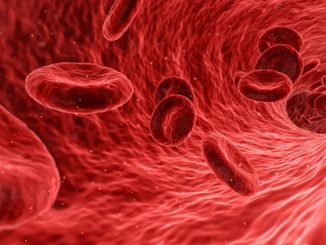
In a life-changing news for a lot of folks, scientists from UK’s Newcastle University (NU) have announced the successful 3D printing of the most advanced artificial cornea ever using human cells.
While still several years away in terms of the high-tech method moving into the operating room, the medical breakthrough – described in the journal Experimental Eye Research – could help millions of people see again. In fact, 15 million patients worldwide need donor corneas – the outermost part of the human eye. However, just 44,000 transplants are performed every year.
It goes without saying that the demand far outweighs the supply – that’s why NU’s proof-of-concept research could be a real game-changer in the sense that the continual success of the new tech could create the conditions for an “unlimited supply of corneas” ready for transplanting.
To create their 3D-printed corneas and make sure it would be a perfect match for a recipient’s eye size and shape, the team from Newcastle had to scan the patients’ eyes to ascertain the necessary dimensions and coordinates. Then they took stem cells from a healthy donor cornea to mix them with a unique gel – a combination of two chemicals called alginate and collagen acid – creating what researchers have deemed “bio-ink.” The research noted that the gel was thick enough to hold its shape and provide a micro-scaffolding to keep the stem cells alive.
“Our unique gel keeps the stem cells alive whilst producing a material which is stiff enough to hold its shape, but soft enough to be squeezed out the nozzle of a 3D printer,” lead researcher Che Connon said in a news release.
Connon also explained that the new bio ink which allows the creation of artificial corneas in under 10 minutes, was a continual work in progress and a very important element that the team had to get it right.
“This builds upon our previous work in which we kept cells alive for weeks at room temperature within a similar hydrogel,” he said, adding they now “have a ready to use bio-ink containing stem cells allowing users to start printing tissues [in a simple low-cost 3D bio-printer] without having to worry about growing the cells separately.”
The 3D printed corneas produced at the University’s Institute of Genetic Medicine will now have to undergo further testing but it is hoped the technology could be available in a minimum of five years, if clinical trials are a success.
“We are thinking ahead and imagining a situation where a doctor’s surgery has a 3-D printer in the corner, and a doctor can pull an ink from the shelf, plug it in and print,” Connon predicts.
NU’s printing process can be seen in the following video.
- Bulenox: Get 45% to 91% OFF ... Use Discount Code: UNO
- Risk Our Money Not Yours | Get 50% to 90% OFF ... Use Discount Code: MMBVBKSM
Disclaimer: This page contains affiliate links. If you choose to make a purchase after clicking a link, we may receive a commission at no additional cost to you. Thank you for your support!




Leave a Reply